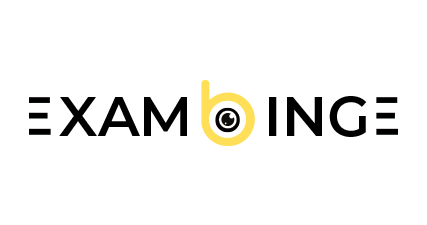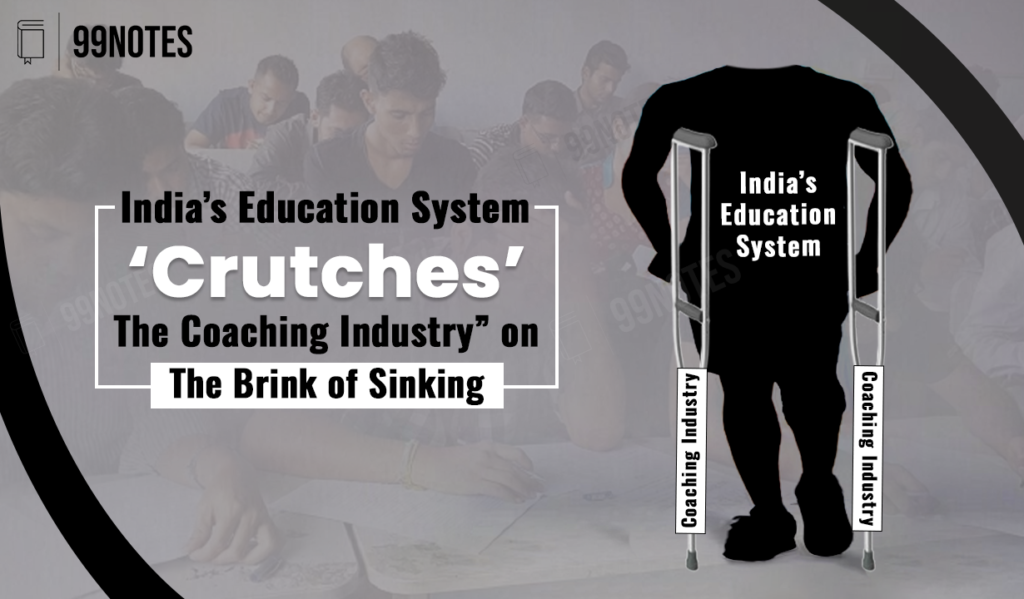It’s been long established that India’s Education System is anything but not a system. It has always been in freefall, but something happened in the 1980s and 1990s—the rise of Coaching Institutes was formalised. This period marked the beginning of private coaching institutes, primarily driven by the increasing competition for entrance examinations in prestigious institutions like the Indian Institutes of Technology (IITs) and medical colleges.
Key Milestones in the Formalization of Coaching Institutes in India:
The first coaching institute was formally registered in 1980, RAU’S IAS STUDY CIRCLE PRIVATE LTD in Delhi. Before this, the coaching centres were not formalised and operated like private tuition centres. However, exciting events were happening elsewhere in the north.
1980s – The Early Beginnings:
- Kota Emergence: Kota, a city in Rajasthan, became the hub for coaching institutes, particularly for engineering entrance exams like the IIT-JEE. In the 1980s, the poor financial health of local fertiliser industries in Kota forced engineers like V.K. Bansal to open coaching classes. He created Bansal classes in 1984, which played a pioneering role in formalising coaching for competitive exams.
- Quickly, other institutes, such as Allen (1988), emerged, and a whole coaching industry was formed in Kota.
1990s – Expansion and Popularity:
- The 1990s saw a significant increase in the number of coaching centres, catering to a growing demand for specialised training for various entrance exams.
- Proliferation Across Cities: The success of coaching institutes in Kota led to the establishment of similar centres in other parts of India, including Delhi, Hyderabad, and Mumbai.
- Rise of National Brands: Institutes like FIITJEE (Forum for Indian Institute of Technology and Joint Entrance Examination), established in 1992 by D.K. Goel, started offering structured coaching programs and materials, further formalising the industry.
2000s – Diversification and Consolidation:
- Diversification: Coaching institutes expanded their offerings to include preparation for other competitive exams like AIEEE (now JEE Main), NEET, UPSC, and various state-level entrance exams.
- Market Consolidation: The industry was also acquiring ‘star teachers’ from all across the country and utilising technology to consolidate their teaching methodologies. This gave this coaching great respect and popularity among the middle class, which was fed up with the quality of formal education.
2010s – Technological Integration and Regulatory Scrutiny:
- Digital Start: The advent of the Internet and digital learning platforms began to influence the coaching industry. Institutes started to offer online courses and test series, making coaching more accessible to students across the country. The industry saw the emergence of larger players through mergers and acquisitions. For example, Byju’s, an ed-tech company founded in 2011, acquired several coaching institutes to expand its reach and offerings.
- Government Regulations: Increased scrutiny and regulation by the government aimed to ensure quality and curb the commercialization of education. Initiatives like the New Education Policy (NEP) 2020 started emphasising holistic education, potentially reducing over-reliance on coaching centres.
The Indian Middle Class is one of the world’s most interesting sociological case studies. It’s a class that is forced to invest or even fund by taking loans in two sectors of India — Healthcare and Education. And therefore, government intervention was necessary to protect the aspiring middle class.
The Jio Kaal
On 27 December 2015, Jio brought the entire nation together in queues. Who would have thought these queues would lead India to a new era! Indians flooded the internet, from YouTube and Google to porn sites, breaking all records.
The YouTube Revolution in the Indian Coaching Industry:
With users all over the internet, students found that all their concepts were being taught on YouTube for free. Many teachers took advantage of this opportunity and started gathering an immense digital following. Several business ideas started growing around this market reach. This further attracted investors.
Year 2016:
- Byju’s raised their biggest-ever funding round.
- Unacademy raised seed funding.
- Udemy saw a 94% surge in its user base.
- PhysicsWallah and several others entered the game on YouTube.
Fundings and valuations were already inflated from day one. Indian ed-tech players did nothing but put offline classes online. It would be fair to say there is no tech in Indian ed-tech.
The Covid Bonanza:
Things were smooth and slow, but ed-tech players were still figuring out the further course of action.
- 24 March 2020: On the evening of 24 March 2020, the Government of India ordered a nationwide lockdown for 21 days, limiting the movement of India’s entire 1.38 billion population as a preventive measure against the COVID-19 pandemic in India.
The entire nation was on halt.
Massive investments came into the ed-tech sector. Ed-tech saw the surge of a lifetime. All valuations were inflated, and ed-techs pushed every boundary they could. We saw a $22 billion ed-tech company from India.
It was a happy-go-lucky picture.
But…
The lockdown ended as it was supposed to.
Within two years, ed-techs started falling like a deck of cards. The newly gained investments were burnt indiscriminately in order to gain market share instead of investing in the product.
The Ed-Tech Crash
India witnessed the biggest crash of a private company, Byjus.
- Lacs lost their jobs.
- People were due on rent, unable to pay EMIs, and some were even forced to take their kids out of school.
Yes, BYJU’s did what they said, taking kids out of conventional schools.
Year 2022-23:
- Ed-tech became the reddest sector for any VC, becoming Investors’ most hated sector from the most cherished gem within a year.
- People were afraid to join ed-tech companies.
- Some ed-techs crawled, some slowed their pace, and some died…
And those who didn’t, had to satiate the thirst of big cheques they got from VCs.
Likes of PhysicsWallah became anything-suffix-Wallah, and Unacademy started opening academies.
Now, the focus was offline.
Every major or minor ed-tech entered the offline game. But again, they didn’t know the rules, so instead of learning, they made their own.
- Properties were taken at 5x price.
- Employees were hired at 10x salaries.
- And the biggest part was the ticket size,for which they entered offline—they killed it.
Year 2024:
An era of major shift begins.
- Ed-tech players are fighting like maniacs in a price game.
- Ed-techs in IIT JEE, NEET, and UPSC have cut the price by 80%.
- Within two initial quarters, ed-techs were successful in pushing hundreds of small offline institutes out of business.
- The mega giants saw the dip—like Allen Kota, admissions were down by 32%, Vajiram IAS saw a dip of 28%, and Drishti IAS saw a dip of 22%.
So what’s the problem? If they are making offline education cheaper or even accessible, it should be appreciated by everyone, right?
A small case study of an IAS Institute in Old Rajinder Nagar, New Delhi (Hub of IAS Coaching):
- Average rent on main areas: 5 lacs for administrative offices in main areas.
- Average classroom rent: 3.2 lacs for a 100-student classroom.
- Average monthly operational cost: 2 lacs.
- Average staffing cost: 15 lacs per month.
- Marketing: 5 lacs in peak season and 1 lac per month in lean season.
Total Average: 28 lacs per month. Annual: 3.36 crore minimum.
Assuming anybody can run three batches of 100 students full in a day (which is impossible, as students prefer a batch of 50-70 max), that comes to around 300 total students. So, basic calculation suggests that just to cover the cost incurred:
- Basic Annual Cost for 300 students: 3,36,00,000
- Maximum students this setup can handle: 300
- Minimum fees required: ₹1,12,000 per student for a year’s batch.
Now, here’s the catch: the average fee charged by any ed-tech is ₹28,000. They are incurring a loss of ₹84,000 per student. (Note: This is for an average institute. Ed-techs always play big; their average burn is 3x this amount.)
Common sense suggests that even if this game continues for the next five years, they won’t be able to kill even 50% of the competition, as the offline market is huge, with many coaching institutes existing for at least 3-5 decades.
- Even if they did, when will they break even?
- This is a throttle war of whose bank accounts vanish first.
- This war is more idiotic in the IIT JEE and NEET sectors.
What’s the harm? Whom to blame?
Harm to the industry employing 3.5 lac people:
- Maximum institutes with little pockets but excellent teachers will die.
- Lacs will become jobless after spending decades in this industry.
Harm to 5 million students:
- With less fees comes the pressure to operate the institute at a minimum level.
- Students will face the heat of incompatible teachers.
- Students will face daily challenges of low-quality content and test papers.
- Ultimately, students will lose peak years and extraordinary money spent on food, accommodation, etc.
Whom to blame?
This cannot be put on one company or one investor group. It’s a failure of the entire sector in itself.
Instead of bringing tech into students’ lives, Ed-techs started chasing revenue, growth, and profitability. Which is not at all wrong, but at what cost? That is what matters.
The offline coaching industry will collapse; whatever be left, will be a monopoly.
Anything from above is super dystopian and practically possible if this ed-tech offline war continues.
It’s high time the ed-tech sector realises:
Merely Bringing Offline Classes in an Online Format is Not Ed-tech
About the Author:
The author has been in the offline coaching industry for eight years and owns an ed-tech firm. The author is trying to bring real tech to Indian Edtech.
Can connect for any data source and elaboration- Anmol Goel




